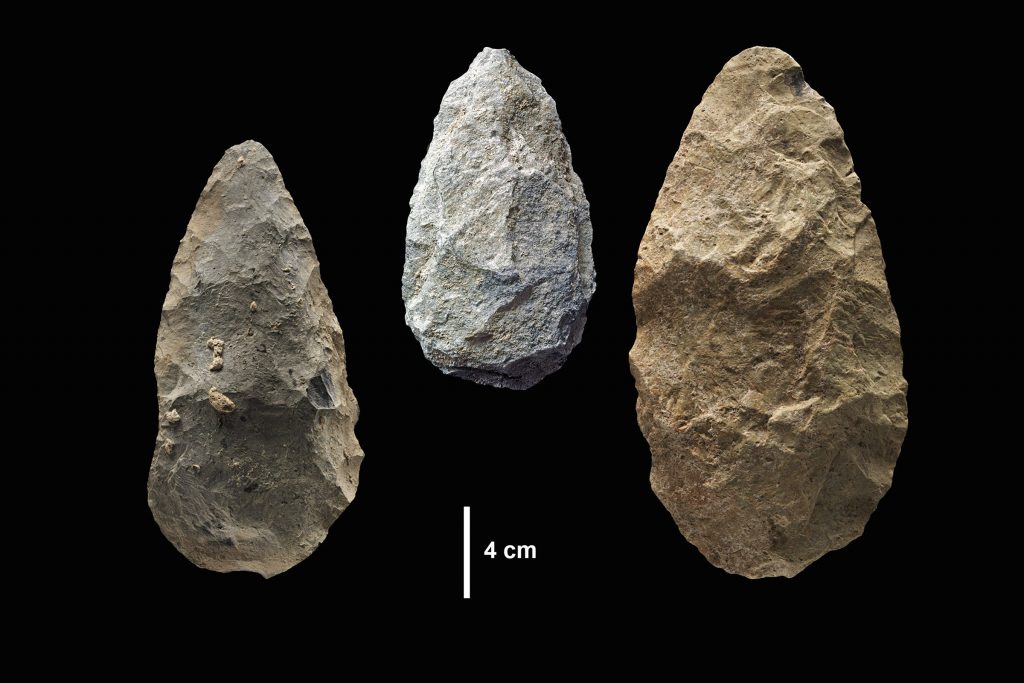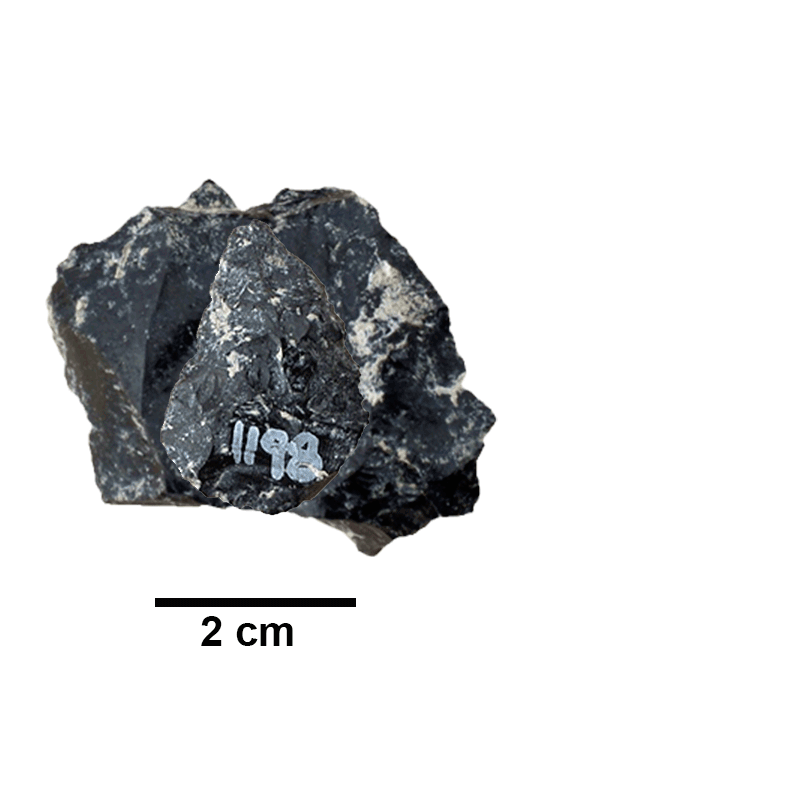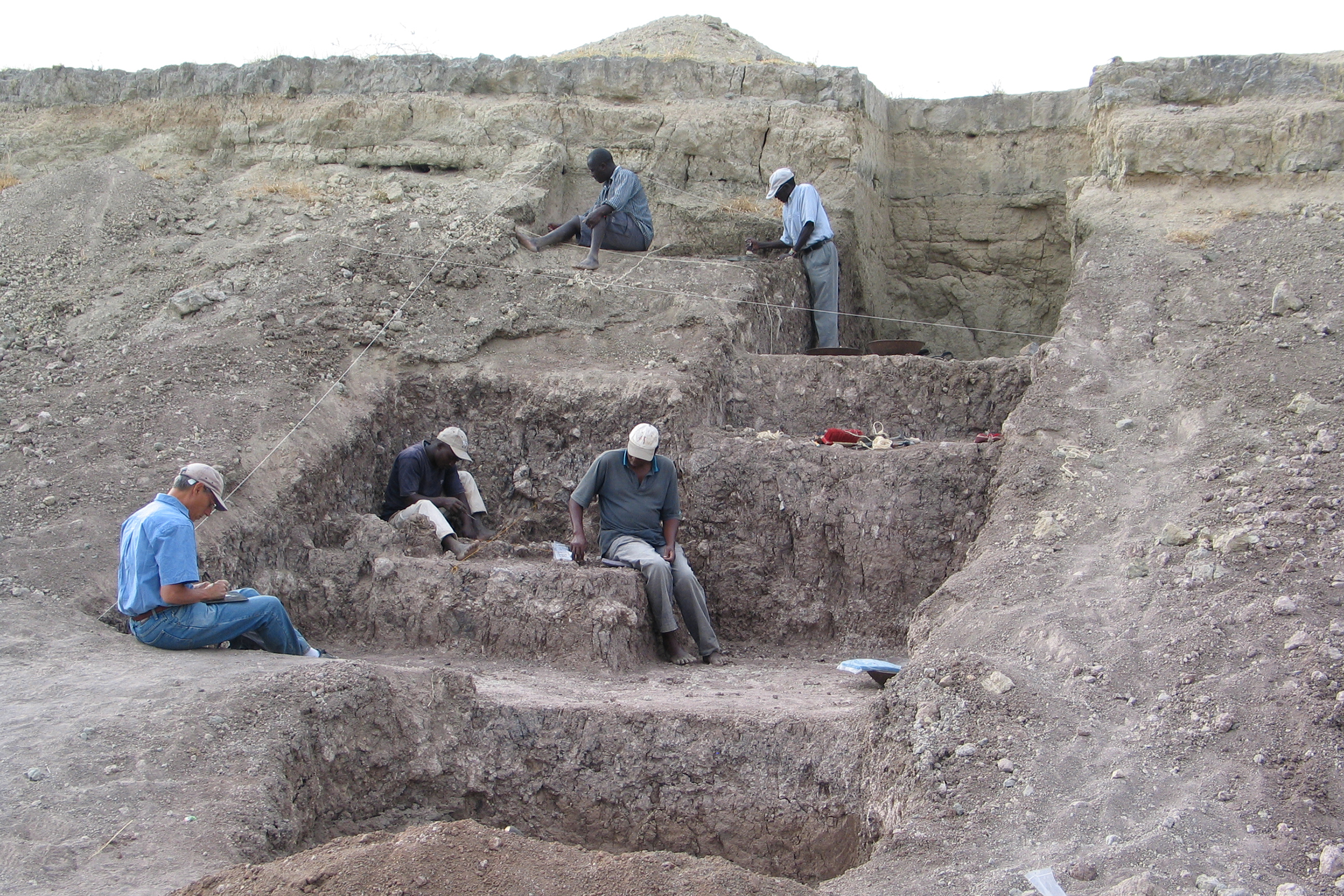An international team of anthropologists, including UConn researcher David Leslie, have discovered that early humans in East Africa had – by about 320,000 years ago, much earlier than previously thought – begun trading with distant groups, using color pigments, and manufacturing more sophisticated tools than those of the Early Stone Age.

These newly discovered activities, reported March 15 in the journal Science, occur tens of thousands of years earlier – verified using radiometric dating – than previous evidence has shown in eastern Africa, and approximately date to the oldest known fossil record of Homo sapiens.
These behaviors, which are characteristic of humans who lived during the Middle Stone Age, replaced technologies and ways of life that had been in place for hundreds of thousands of years.
Evidence for these milestones in humans’ evolutionary past comes from the Olorgesailie Basin in southern Kenya, which holds an archeological record of early human life spanning more than a million years. The new discoveries indicate that these behaviors emerged during a period of tremendous environmental variability in the region. As earthquakes remodeled the landscape and climate fluctuated between wet and dry conditions, technological innovation, social exchange networks, and early symbolic communication would have helped early humans survive and obtain the resources they needed despite unpredictable conditions, the scientists say.
“The innovation to create these new tools and adapt these new suites of behaviors is likely driven by the changes in the environment these people were adapting to,” says Leslie, a research scientist in the Department of Anthropology at UConn, whose expertise in stone tools helped with the research. “Developing new tools to extract more resources from the environment is a particularly human characteristic.”

The first evidence of human life in the Olorgesailie Basin comes from about 1.2 million years ago. For hundreds of the thousands of years, people living there made and used large stone-cutting tools called handaxes. Beginning in 2002, the team discovered a variety of smaller, more carefully shaped tools in the Olorgesailie Basin. Isotopic dating by collaborators revealed that the tools were surprisingly old – made between 320,000 and 305,000 years ago. These tools were carefully crafted and more specialized than the large, all-purpose handaxes. Many were points designed to be attached to a shaft and potentially used as projectile weapons, while others were shaped as scrapers or awls.
While the handaxes of the earlier era were manufactured using local stones, the researchers found small stone points made of non-local obsidian at their Middle Stone Age sites. The team also found larger, unshaped pieces of the sharp-edged volcanic stone at Olorgesailie, which has no obsidian source of its own. The diverse chemical composition of the artifacts matches that of a wide range of obsidian sources in multiple directions 15 to 55 miles away, suggesting exchange networks were in place to move the valuable stone across the ancient landscape.
The team also discovered black and red rocks – manganese and ocher – at the sites, along with evidence that the rocks had been processed for use as coloring material.
“The pigments are really interesting and important in that they show early signs of symbolic representation,” Leslie says. “They were maybe painting their bodies, perhaps their clothing, or using them for rock art. What is striking about the use of the pigment is that it shows people were thinking 320,000 years ago in very similar ways to how we think about the world too.”
Hoping to understand what might have driven such fundamental changes in human behavior, the research team integrated data from a variety of sources to assess and reconstruct the ancient environment in which the users of these artifacts lived. Their findings suggest that the period when these behaviors emerged was one of changing landscapes and climate, in which the availability of resources would have been unreliable.
Developing new tools to extract more resources from the environment is a particularly human characteristic. — David Leslie
Geological, geochemical, paleobotanical, and faunal evidence indicates that an extended period of climate instability affected the region beginning around 360,000 years ago, at the same time earthquakes were continually altering the landscape. Although some researchers have proposed that early humans evolved gradually in response to an arid environment, Potts says his team’s findings support an alternative idea. Environmental fluctuations would have presented significant challenges to inhabitants of the Olorgesailie Basin, prompting changes in technology and social structures that improved the likelihood of securing resources during times of scarcity.
The paper also highlights the published contributions of the Kapthurin Formation project, also in Kenya, led by UConn anthropology professor Sally McBrearty.
The research teams for this study published in Science include collaborators from the following institutions: the Smithsonian Institution, the National Museums of Kenya, George Washington University, the Berkeley Geochronology Center, the National Science Foundation, the University of Illinois at Urbana-Champaign, the University of Missouri, the University of Bordeaux (Centre National de la Recherche Scientifique), the University of Connecticut, Emory University, and the University of Bergen.
Funding for this research was provided by the Smithsonian, the National Science Foundation (grant numbers EAR-1322017, BCS-0218511 (RP) 2011116368 (AMZ), BCS-1240694 (ASB and AMZ), DGE-0801634, EAR-1322017, BCS-0802757, BCS-0814304), and George Washington University.



